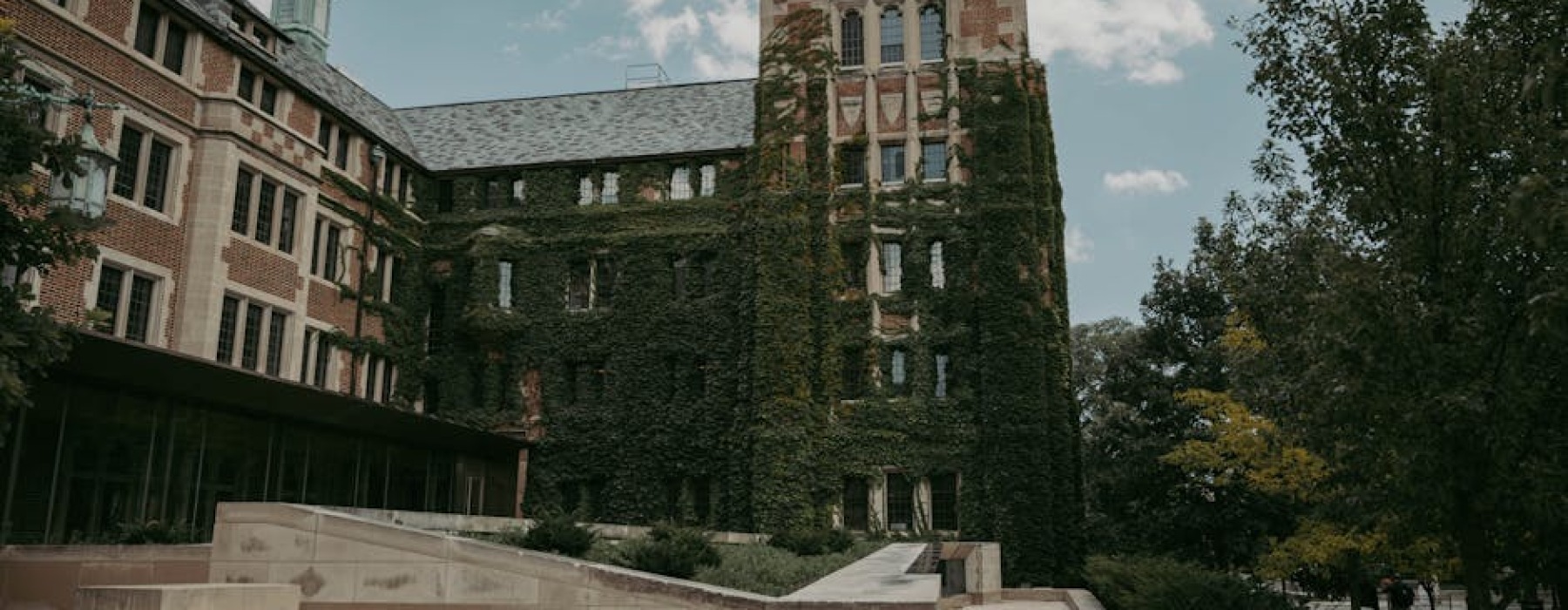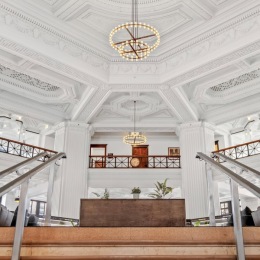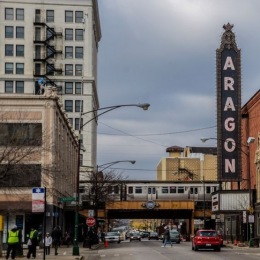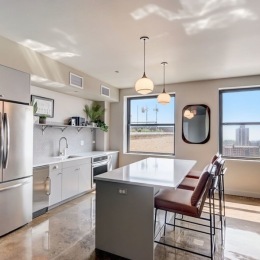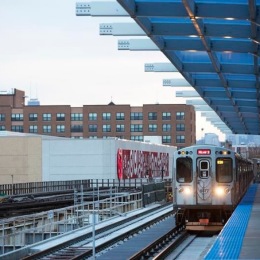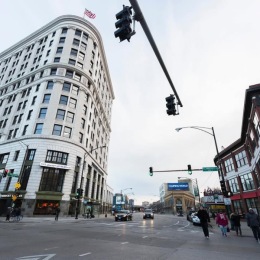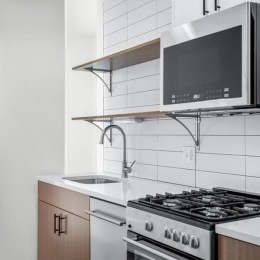Why Location Matters for UChicago Students and Professionals
Apartments near University of Chicago offer more than just a place to sleep—they're your gateway to one of America's most prestigious academic communities. With over 2,000 rental options within commuting distance, finding the right fit comes down to balancing your budget, lifestyle, and daily routine.
Quick Overview: Your Best Options
- Hyde Park: Walking distance to campus, studios from $850-$1,250
- Woodlawn: Budget-friendly, growing neighborhood with new developments
- South Loop: Modern high-rises, 15-minute Metra ride to campus
- Kenwood: Residential streets, mix of apartments and houses
The University of Chicago sits in Hyde Park, about four miles south of downtown Chicago. This location puts you close to Lake Michigan's shores while keeping you connected to the city's cultural heart. Hyde Park natives love the friendly atmosphere of the neighborhood—and that welcoming vibe extends to the thousands of students, faculty, and young professionals who call this area home.
Most lease terms run 9-12 months, though some properties offer flexible options for students. Pet-friendly buildings are common, often requiring a one-time fee plus monthly rent. Many newer developments include modern amenities like fitness centers, study rooms, and high-speed WiFi.
The Metra Electric line connects you to downtown Chicago in about 15 minutes, opening up housing options in neighborhoods like the South Loop while keeping your commute manageable.

Best Neighborhoods for UChicago Life
Finding the perfect apartments near University of Chicago starts with understanding your neighborhood options. Each area around campus offers its own personality and perks, from the academic buzz of Hyde Park to the urban energy of downtown Chicago.
Hyde Park puts you right in the heart of campus life, while Woodlawn offers more space for your budget. If you're drawn to city skylines and don't mind a short commute, neighborhoods like Kenwood and the South Loop open up different lifestyle possibilities.
Public Transit makes it all work seamlessly. The CTA bus system weaves through Hyde Park and Woodlawn, while the Metra Electric line whisks you downtown in about 15 minutes. Many students find that having good transit connections actually expands their housing options significantly.

Hyde Park Essentials
Hyde Park feels like a college town that happens to sit in a major city. The neighborhood wraps around campus with tree-lined streets, historic architecture, and that unmistakable academic energy.
The Museums here aren't just tourist attractions—they become part of your daily life. The Smart Museum of Art and Oriental Institute Museum offer free admission to students. The Museum of Science and Industry anchors the eastern edge of the neighborhood.
Parks provide essential breathing room between study sessions. Washington Park stretches along the western border, while Jackson Park offers lakefront access and plenty of green space.
Dining in Hyde Park caters to every budget and craving. You'll find late-night pizza joints, cozy coffee shops perfect for writing papers, and upscale restaurants. The 53rd Street corridor buzzes with activity, while Harper Court offers modern dining and shopping.
Woodlawn's Growing Scene
Woodlawn represents one of Chicago's most exciting neighborhood changes. Just south of Hyde Park, this area offers some of the best value for apartments near University of Chicago while maintaining easy campus access.
New developments are reshaping the landscape without erasing the neighborhood's character. These projects bring modern amenities and fresh retail options while preserving historic charm.
The Budget-friendly aspect can't be overstated. Your rent dollars stretch further here, often meaning larger spaces, better amenities, or simply more money left over for books and social activities.
The commute to campus typically takes 10-15 minutes by bike or bus, making it feel connected rather than distant.
Living a Little North: South Loop & Downtown
The South Loop offers a completely different lifestyle for those willing to accept city living. Think Skyscraper views, rooftop decks, and urban amenities that make you feel like you're living in a movie about successful young professionals.
The Metra Electric line makes this lifestyle practical rather than just aspirational. The 15-minute ride gives you enough time to mentally shift between city life and academic focus.
Living downtown means access to internships, networking events, and cultural experiences that complement your education. The trade-off is higher rent and a daily commute, but many graduate students and young professionals find the lifestyle benefits worth it.
Apartments Near University of Chicago: Rent & Housing Snapshot
The rental market around UChicago offers something for every budget and lifestyle. Apartments near University of Chicago span a wide price range, with studios typically starting around $850 and reaching up to $1,250 per month. One-bedroom units generally fall between $1,150-$1,400, while two-bedroom apartments range from $1,600-$2,000—making them perfect for splitting costs with a roommate.
What creates these price differences? It comes down to the building's age, amenities, and exact location. Older buildings with basic amenities sit at the lower end of the spectrum, while newer developments with luxury features command premium prices.
Furnished apartments are especially popular among students who want to avoid the hassle of buying and moving furniture. These typically cost $100-$300 more per month than unfurnished units, but they eliminate the stress of furnishing your first apartment. Unfurnished units give you more control over your living space and often represent better long-term value if you're planning to stay for multiple years.
The utilities situation varies significantly between buildings. Some properties include heat and water in the rent, while others require you to set up separate utility accounts. Internet service is increasingly included in newer developments—property managers recognize that reliable high-speed connectivity isn't optional for academic success.
Popular Housing Types Around Campus
The housing around UChicago tells the story of Chicago's architectural evolution. Traditional apartment buildings from the early 1900s offer character features like hardwood floors, high ceilings, and detailed moldings that you simply can't find in modern construction. These buildings often provide the best value, combining old-world charm with reasonable rents.
Renovated walk-ups represent another popular choice. These typically 2-4 unit buildings offer more privacy than large apartment complexes while keeping costs manageable. Many feature updated kitchens and bathrooms while preserving original architectural details.
Purpose-built student housing has become increasingly common around campus. These developments specifically target university students and young professionals with amenities like study rooms, fitness centers, and social spaces designed for building community.
Amenities Checklist Students Love
Modern apartments near University of Chicago compete fiercely on amenities that make student life easier. In-unit laundry tops almost every wish list—no more hauling baskets to basement laundromats or fighting for machines during Sunday afternoon rushes. Buildings with washers and dryers in every unit typically command higher rents but save precious time and hassle.
Fitness facilities have become standard in newer developments. Having a gym in your building eliminates membership fees and makes it easier to maintain healthy habits during stressful academic periods.
Study spaces within apartment buildings provide alternatives to crowded campus libraries. These might include rooms, group meeting spaces, or even rooftop areas with WiFi and city views. During finals week, having these options steps away from your bed can be invaluable.
Pet-friendly policies matter to many students who want furry companionship during their academic journey. Most buildings that allow pets require a one-time fee plus monthly pet rent. Weight limits and breed restrictions are common, so check policies carefully if you have a four-legged friend.
High-speed WiFi has evolved from luxury to absolute necessity. Most newer buildings include internet service in the rent, recognizing that students need reliable connectivity for research, streaming, video calls home, and staying connected with family and friends.
Apartments Near University of Chicago: Lease Terms & Costs
Standard lease terms run 9-12 months, aligning perfectly with the academic year. This works well for most students but can create challenges for those with summer internships elsewhere or study abroad programs. Some buildings offer flexible lease options, though these typically come with higher monthly rates.
Application fees range from $50-$150 and cover background checks and credit screening. Some buildings waive these fees during promotional periods or for qualified applicants with strong credit. Processing typically takes 1-3 business days.
Security deposits vary widely across the market. Traditional buildings often require one month's rent as a deposit, while some newer developments advertise "no security deposit" options. These alternatives might substitute deposit insurance or higher monthly fees, so compare the total cost carefully.
Move-in costs can surprise first-time renters who focus only on monthly rent. Beyond the security deposit and first month's rent, you might need to pay last month's rent, utility deposits, and various administrative fees. Budget for 2-3 months' rent upfront to avoid any unpleasant surprises when it's time to sign your lease.
How to Find and Rent Your Place Fast
The rental market around UChicago moves at lightning speed, especially when everyone's hunting for that perfect fall apartment in the spring. You'll want to start your search 3-4 months ahead to snag the best options and avoid the last-minute scramble that leaves you settling for whatever's left.
Online listing sites give you the broadest view of what's available right now. Major platforms aggregate listings from multiple sources, making it much easier to compare your options side by side. Set up those search filters early—price range, neighborhood, must-have amenities, and your move-in date—then let the alerts do the heavy lifting for you.
Don't overlook reaching out to property management companies directly. Many of them manage dozens of units within walking distance of campus, and they often know about upcoming vacancies before they hit the big listing sites.
Latest research on online listings
Step-by-Step Rental Timeline
Starting 3-4 months out, dive into neighborhood research and nail down your realistic budget. Create accounts on the major rental sites and set up those saved searches with email alerts. This is when you're just getting your bearings and figuring out what you actually want versus what you think you want.
At the 2-3 month mark, start reaching out to properties and scheduling virtual tours. This timing hits the sweet spot when the best units for your move-in date typically become available.
With 1-2 months to go, narrow your list down to your top 3-5 choices and schedule in-person tours if you can swing it. Get all your application materials and financial documents organized and ready to go. You want to be the person who can submit everything immediately.
In those final 2-4 weeks, submit applications for your top choices and be ready to make decisions quickly. Desirable apartments near University of Chicago often get multiple applications within days of being listed.
During the last 1-2 weeks, complete your lease signing and start arranging move-in logistics. Confirm utility transfers and internet installation dates—trust us, you don't want to be without WiFi during orientation week.
Documents & Money You'll Need
Photo identification is non-negotiable for all applications. Your driver's license or state ID works perfectly fine—you don't need anything Chicago-specific to get started.
Proof of income usually means recent pay stubs, offer letters, or bank statements. Students often need to provide financial aid documentation or parent financial information. Don't stress if your income situation is complicated—many buildings work with students who have non-traditional income sources.
Co-signer requirements vary by building and your financial situation. Parents or guardians commonly step in as co-signers for students, and they'll need to provide their own financial documentation and sign legally binding agreements.
Application fees are typically due when you submit your application. Some buildings let you pay online, while others want certified checks or money orders. These costs add up quickly if you're applying to multiple places, so factor them into your apartment-hunting budget.
First month's rent is usually due at lease signing, along with any security deposits or additional fees. Some buildings offer payment plans for move-in costs, but most expect full payment upfront.
apartments near university of chicago: Roommates & Shared Housing
Finding compatible roommates can cut your housing costs significantly while giving you built-in social connections. Many students connect through university Facebook groups, roommate matching websites, or through their academic programs. The key is finding people who share similar living habits and financial responsibility levels.
When sharing an apartment, establish clear agreements about utilities, cleaning responsibilities, and guest policies before anyone signs anything. Most leases make all tenants jointly responsible for rent, so you're essentially vouching for each other financially.
Subleasing rules vary dramatically by building and lease terms. Some landlords allow subleasing with their approval, while others prohibit it entirely. If you might study abroad or leave for summer internships, clarify these policies before signing.
Split utilities fairly by dividing them equally among roommates or based on room size and usage patterns. Many roommate groups find it easier to have one person manage utility accounts and collect payments from others monthly.
Safety, Commute, and Everyday Living
Getting around from your apartments near University of Chicago becomes second nature once you understand the transportation network. You have multiple options, whether you prefer walking, biking, or taking public transit.
The University of Chicago Police Department extends coverage into surrounding neighborhoods where most students live. Emergency call boxes throughout Hyde Park and Woodlawn connect directly to university security, providing immediate assistance and peace of mind.
Campus lighting has improved dramatically over the years. Well-lit pathways connect residential areas to academic buildings, making evening commutes more comfortable. Many apartment buildings also invest in exterior lighting and controlled access systems.
The UGo shuttle system offers free transportation for university affiliates, connecting various points around Hyde Park with campus. These shuttles run frequently during peak hours and provide a reliable backup when Chicago weather makes walking less appealing.
CTA buses form the backbone of public transportation in the area. Routes like the #6 Jackson Park Express and #55 Garfield connect Hyde Park to downtown Chicago. Bus stops are well-marked, and buses run regularly throughout the day.
For those living downtown, the Metra Electric line provides an excellent commute option. The 59th Street station sits just blocks from campus, and the 15-minute ride gives you time to review notes or catch up on reading.
Bike lanes throughout Hyde Park and connecting to the Lakefront Trail make cycling popular. Chicago's bike infrastructure has expanded significantly, with protected lanes on many major streets. Many buildings provide bike storage, and the city's Divvy bike-share system has stations throughout the area.
Tips for International & Out-of-State Students
Searching for apartments near University of Chicago from across the country or around the world presents unique challenges, but many buildings now accommodate distant applicants with virtual tours and flexible scheduling.
Virtual tours have become standard practice. Most property managers offer video calls where they'll walk through units while you watch from anywhere in the world. Ask specific questions about storage space, natural light, and neighborhood noise levels.
Furnished apartments often make the most sense for your first year. Shipping furniture internationally costs thousands of dollars, and buying everything new adds up quickly. Furnished units typically include bed, dresser, desk, couch, and kitchen basics.
Banking relationships become crucial for rental applications. Many landlords prefer applicants with local bank accounts and established credit history. International students should research banks that understand student visa situations.
Tenant Rights & Responsibilities in Chicago
Chicago tenant law provides important protections that every renter should understand. These laws apply equally to students and long-term residents.
Security deposit rules limit how much landlords can charge and establish timelines for returning deposits. Most buildings can charge no more than 1.5 times monthly rent as a security deposit. After you move out, landlords must return deposits within 30-45 days.
Repair requests should always be made in writing and documented carefully. For urgent issues like heating failures during winter, landlords must respond quickly. Non-emergency repairs have longer response timeframes.
Lease termination requires proper notice—usually 30 days for month-to-month arrangements. Breaking fixed-term leases early may result in penalties, though some situations provide legal protections.
Frequently Asked Questions About Apartments Near University of Chicago
What utilities are usually included in Hyde Park rentals?
Most apartments near University of Chicago include heat and water in the rent, which makes sense given the area's older building stock with centralized heating systems. This can be a real money-saver during Chicago's chilly winters when heating bills can really add up.
Internet service is becoming more common in newer developments, though many older buildings still require you to set up your own account. The good news is that most providers offer student discounts, so you can often get decent speeds without breaking the bank.
Electricity is typically separate, though some all-inclusive buildings include it in the rent. Gas for cooking and hot water varies quite a bit—some buildings include it while others require separate accounts. Always ask what's included before signing a lease to avoid any surprise bills showing up in your mailbox.
Are pets allowed in most buildings near campus?
Many buildings in the UChicago area welcome pets, recognizing that furry companions can make student life much more enjoyable. Most pet-friendly buildings require a one-time fee plus monthly pet rent, which is pretty standard for Chicago rentals.
Weight limits (often around 50-75 pounds) and breed restrictions are common, especially in older buildings. Some properties limit the number of pets per unit, usually capping it at two. The rules can vary quite a bit between buildings, so it's worth checking pet policies before you fall in love with a place.
If you're thinking about getting a pet after you move in, make sure to check with your landlord first. Some leases require approval for new pets, even if the building is generally pet-friendly.
Can I get a 6-month lease if I'm only on campus for one quarter?
Short-term leases are available but less common and typically more expensive than standard annual leases. Some buildings offer month-to-month options after an initial lease period, though these usually cost more per month than signing a longer-term lease.
Subletting might be your best bet for short stays. Many students sublet during summer breaks or study abroad periods, creating opportunities for shorter-term housing. However, check lease terms carefully—some buildings restrict or prohibit subletting entirely.
Another option is finding someone who needs a roommate replacement mid-lease. University Facebook groups and housing boards often have posts from students looking for someone to take over part of their lease, which can work out perfectly for quarter-long stays.
Conclusion
Finding the right apartments near University of Chicago comes down to balancing your priorities: budget, location, amenities, and lifestyle preferences. Whether you choose the academic atmosphere of Hyde Park, the emerging energy of Woodlawn, or the urban excitement of downtown Chicago, you'll find options that support your academic success and personal growth.
The rental market offers something for everyone, from budget-conscious students sharing apartments to professionals seeking luxury amenities. Starting your search early, understanding your options, and being prepared with necessary documents will help you secure the perfect place to call home.
Your housing choice shapes more than just where you sleep—it influences your daily routine, social connections, and overall university experience. Hyde Park puts you in the heart of academic life, while neighborhoods like Woodlawn offer more space for your money. Downtown options provide urban amenities and networking opportunities that complement your studies.
Transportation connections make it possible to live beyond Hyde Park while maintaining easy access to campus. The Metra Electric line, in particular, opens up exciting possibilities for those willing to commute.
At The Teller House by Flats®, we understand the importance of finding a home that supports your academic and personal goals. Our historic building in Uptown Chicago offers the perfect blend of character and modern convenience, with easy access to downtown Chicago and the University of Chicago via the Metra Electric line.
Ready to explore your options? Schedule a Tour today and find why The Teller House might be your perfect home base for academic success and urban trip.
